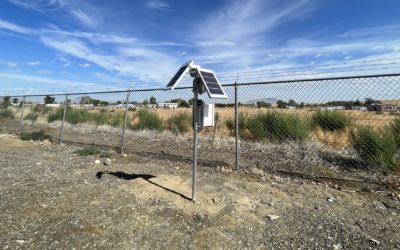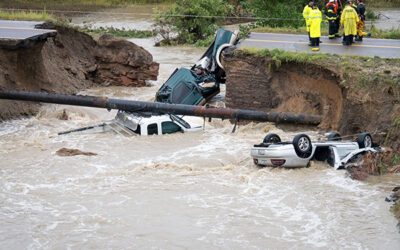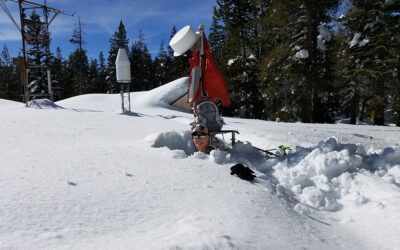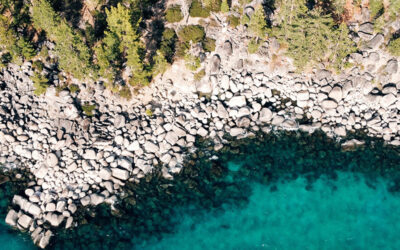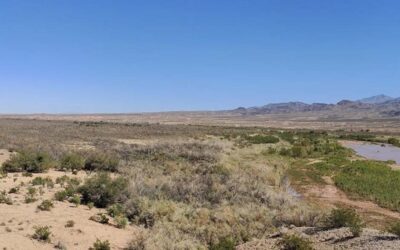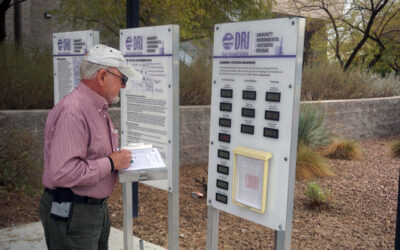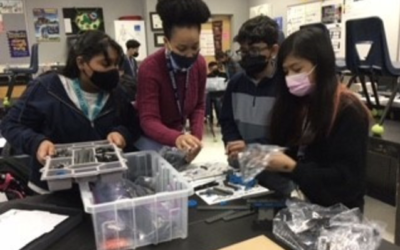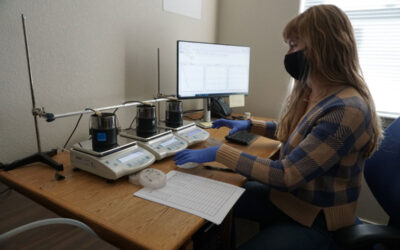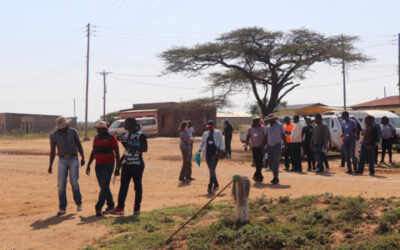In 2021, DRI researchers partnered with the Nevada Division of Environmental Protection (NDEP) to address the gap in air quality monitoring. Led by Kristin VanderMolen, Ph.D., assistant research professor of atmospheric science, a new study details how the research team designed custom air quality sensors and information materials for rural Nevada counties.
Preparing for the Floods That Follow the Fires
A conversation with Guo Yu and Jeremy Giovando about their new research examining post-fire flood frequency. The study expands on previous frameworks to account for the compounding impacts of repeated wildfires on flood risk, using a southern California watershed as a case study.
A New Tool Can Help Protect California and Nevada Communities from Floods While Preserving Their Water Supply
DRI’s Anne Heggli is partnering with the National Weather Service to understand flood risk from rain-on-snow storms in real-time, protecting communities and enabling water conservation throughout Nevada and California.
DRI Scientists Launch Nevada Orchid Project
DRI scientists are starting the first ever effort dedicated to studying and conserving Nevada’s orchids. Many people know orchids as flashy, delicate flowers raised in lush greenhouses, but orchids also thrive in the sparse wetlands sprinkled around Nevada’s arid landscape. In fact, lovers of the state’s orchids like to tout one impressive statistic: Nevada has no less than 14 species of native orchids, in contrast with Hawaii’s mere three.
More Heatwaves and Vanishing Snow: The Lake Tahoe Basin’s Future on a Warming Planet
DRI scientists produced the most detailed projections yet for how the region’s landscape will be impacted by climate change. Lake Tahoe is known for its crystal-clear blue water, scenic mountain backdrop, and world-class recreation opportunities. Unfortunately, the lake and surrounding basin aren’t insulated from global climate change.
Cracking the Mysterious Case of Dying Desert Forests
DRI researchers are trying to solve the mystery of mass die-offs of screwbean mesquite trees, a critical part of their desert ecosystem.
Inspiring solutions: DRI’s Community Environmental Monitoring Program tracks radioactivity in Nevada’s air and water
For more than 40 years, DRI’s Community Environmental Monitoring Program (CEMP) has worked to address fears about radiation exposure and provide answers to the concerned public in communities surrounding the NNSS through a simple but impactful solution: putting radioactivity data in the hands of the people.
Las Vegas student celebrates Bar Mitzvah by raising funds for Nevada Robotics program
Caleb, a Las Vegas middle schooler, chose to give back to celebrate his Bar Mitzvah. Caleb reached out to DRI’s Nevada Robotics program with a desire to help raise money to give greater access to robots for students at a Title 1 middle school in the Las Vegas area.
Seeking answers from the ashes
How did recent Sierra Nevada fires such as the Caldor, Tamarack, and Dixie impact soil properties in burned areas? An interdisciplinary team of DRI scientists has received funding from the National Science Foundation to find out.
WASH Capacity Building Program Alumni Share Career Impacts
Alumni from the Desert Research Institute’s WASH Capacity Building Program (WASHCap) recently gathered for an online Zoom panel to share some of the positive impacts that the program has had on their careers in the areas of water, sanitation, and hygiene (WASH) across Africa and India.
